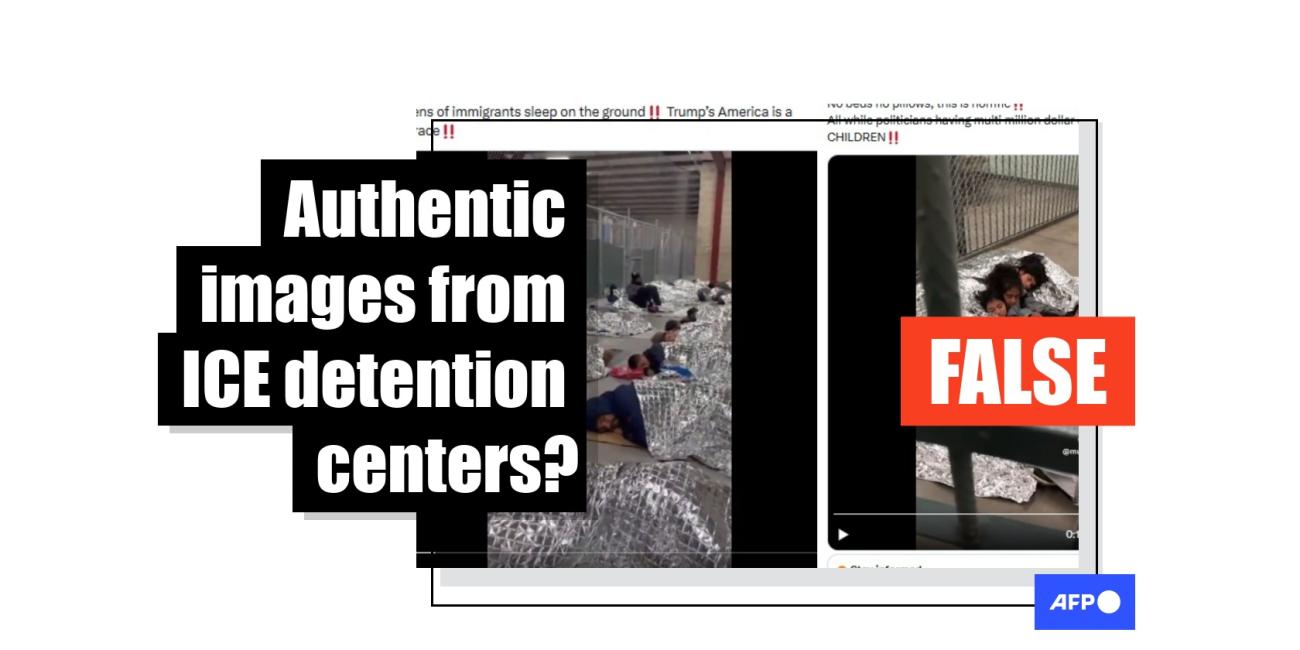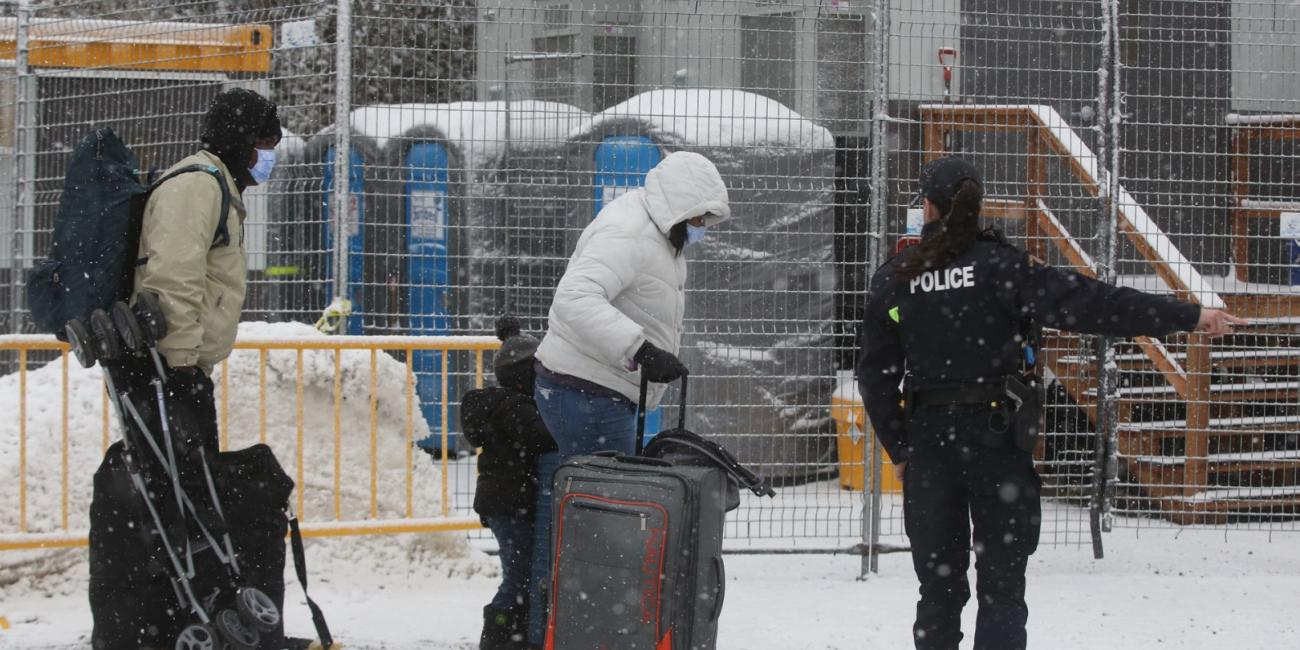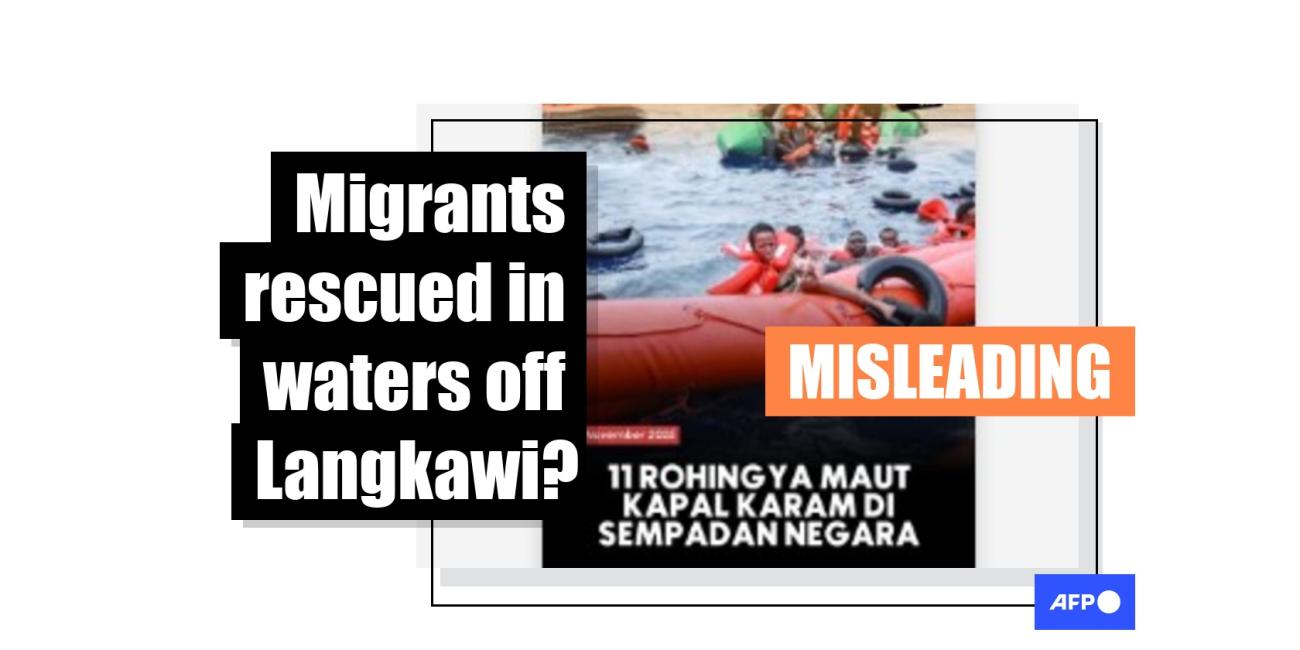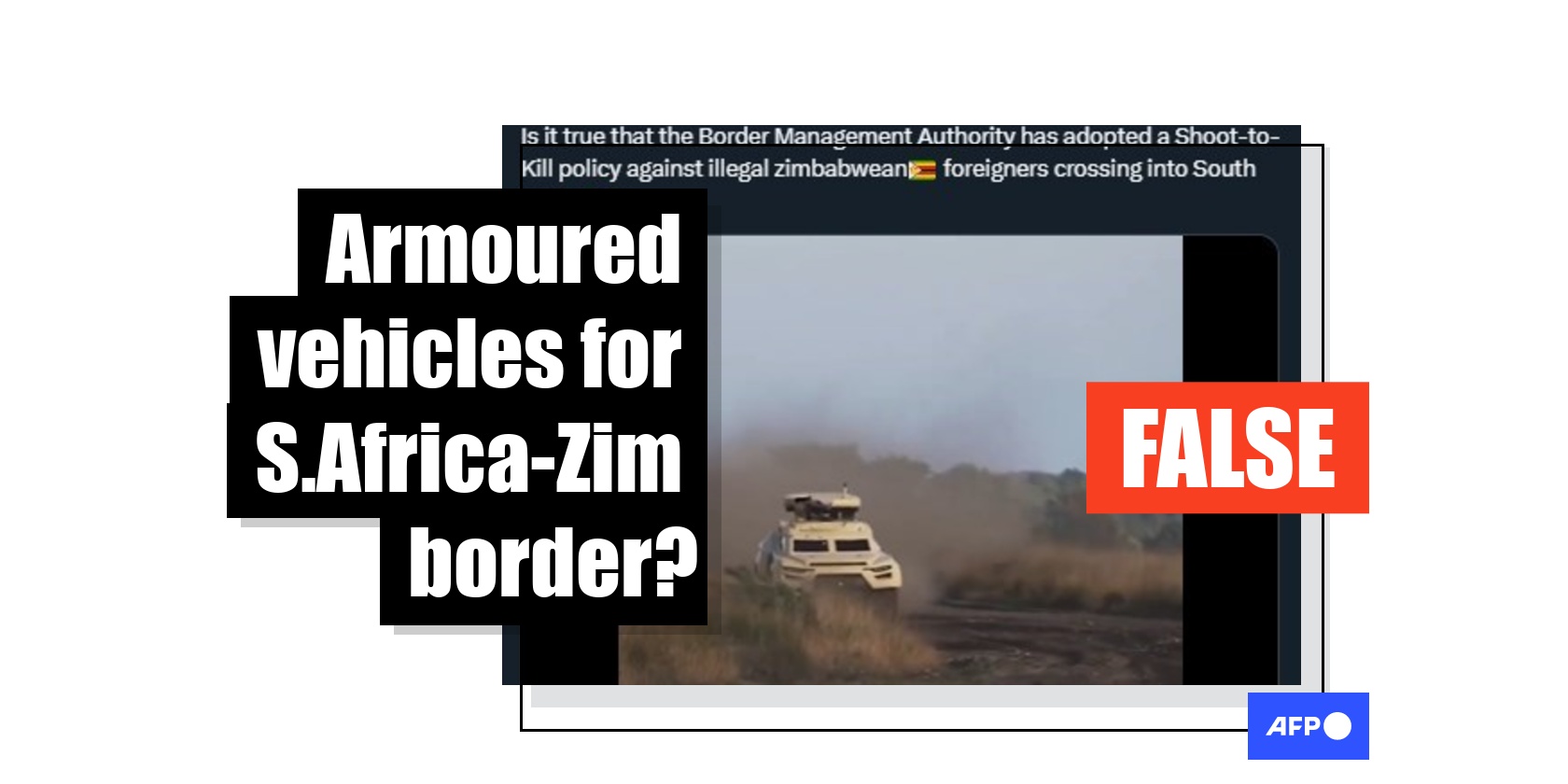
Post falsely claims South Africa patrolling border with Belgian armoured vehicle
- Published on March 21, 2025 at 13:37
- 3 min read
- By Tendai DUBE, AFP South Africa
“Is it true that the Border Management Authority has adopted a Shoot-to-Kill policy against illegal zimbabwean foreigners crossing into South Africa (sic)?” reads the caption of an X post published on March 10, 2025.
The post has been shared hundreds of times and includes a 30-second clip showing different angles of a modern-looking armoured vehicle that shoots from a turret.
The video’s robotic-sounding narrator says: “The South African Border Management Authority has decided to deploy this versatile armoured personnel carrier on the border between South Africa and Zimbabwe.”
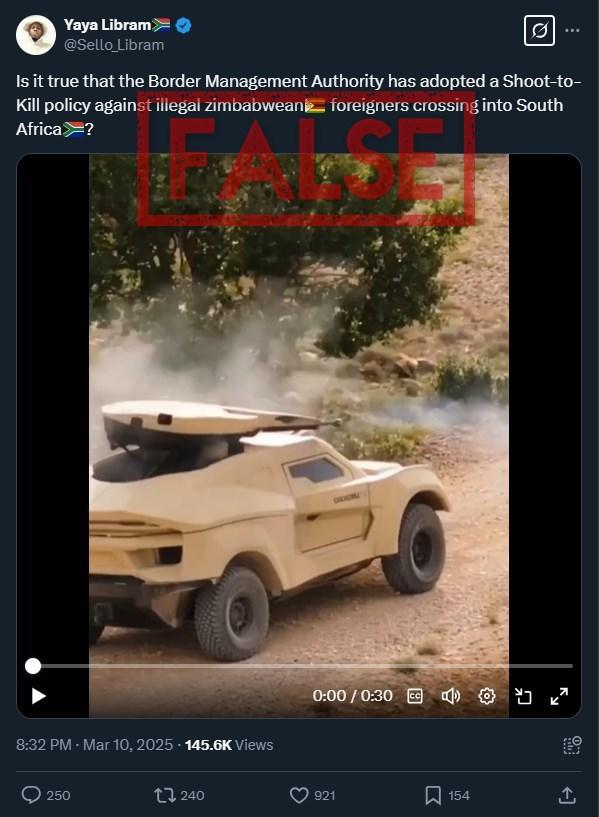
“This is to stop the uncontrollable influx of illegal Zimbabweans crossing into South Africa,” says the voice, adding the South African BMA is “considering a shoot-to-kill policy at the Beitbridge border [post]”.
Two images are also randomly slotted into the video: the BMA’s logo and a collage of photographs showing people crawling under, and climbing over, barbed wire barriers.
Users in the post’s comments section speculated over the claim’s veracity. One wrote: “I doubt that this is true. ANC & DA will never (shoot to kill) their cheap labor, if they do who will do their cheap labor for them?”
The African National Congress (ANC) and the Democratic Alliance (DA) are coalition partners in South Africa’s Government of National Unity (GNU).
But while the video shows a real vehicle, the footage was modified by adding images and audio to falsely link it to South Africa.
Cockerill i-X
By conducting reverse image searches of keyframes in the clip, AFP Fact Check found it contained spliced footage from YouTube videos published in 2022 and 2023 about an armoured vehicle called Cockerill i-X, made by Belgium-based technology and engineering company John Cockerill (archived here and here).
The 2022 video was published by a channel called Military Coverage which reports on military news, while the 2023 video was published by the company.
Neither video refers in any way to South Africa; the clip’s audio soundtrack referencing South Africa was added.
Meanwhile, the photos in the clip showing people crossing barbed wire fences are also old: one of a woman was published in 2007, and two others a year later (archived here, here and here).
The captions for all three photos described them as Zimbabweans crossing into South Africa.
Not in South Africa
“The images of the Cockerill i-X in [the post] were all taken from videos made by John Cockerill in Belgium and France,” Julien Marique, a spokesman at the engineering group, told AFP Fact Check on March 14, 2025.
“To our knowledge, no John Cockerill equipment has been supplied to armed forces in the region,” he said.
Contacted by AFP Fact Check on March 13, 2025, the spokesmen for South Africa’s Department of Home Affairs and the BMA rejected the claim as “fake news”.
Darren Olivier, the director at African Defence Review, which focuses on news about the continent’s armed forces, also told AFP Fact Check that the video is “definitely false”.
He said the South African Army issued a long-awaited bid in 2024 to acquire new border patrol vehicles, but “the Cockerill i-X does not meet the requirements, which call for larger mine-resistant vehicles able to carry an infantry section” (archived here).
‘Shoot-to-kill’
About the feasibility of a “shoot-to-kill policy”, Olivier said the BMA can use lethal force at a border crossing “but within strict limitations” under South African enforcement laws (archived here).
“Broadly speaking, that means that any use of lethal force has to be either in self-defence or to protect the lives of others or the prevention of a serious crime where no reasonable alternative exists and that it must be proportional to the threat faced,” Olivier explained.
He added: “There are much less restrictive rules of engagement in the event of an actual armed attack or invasion of South Africa's territory.”
Greener pastures
Africa’s most industrialised economy attracts thousands of migrants, especially from Zimbabwe, which suffers from sky-high inflation and a long-floundering economy (archived here).
But South Africa has its challenges as well, with one of the world’s highest unemployment rates, which leads to sporadic bursts of anti-immigrant violence (archived here and here).
The government has also been cracking down on undocumented foreigners and their local employers (archived here and here).
From April to August 2024, South Africa spent more than R52 million (approximately $2.8 million) to deport nearly 20,000 people who had violated immigration laws (archived here).
See here for more AFP Fact Check’s migration-related debunks.
Copyright © AFP 2017-2025. Any commercial use of this content requires a subscription. Click here to find out more.
Is there content that you would like AFP to fact-check? Get in touch.
Contact us
